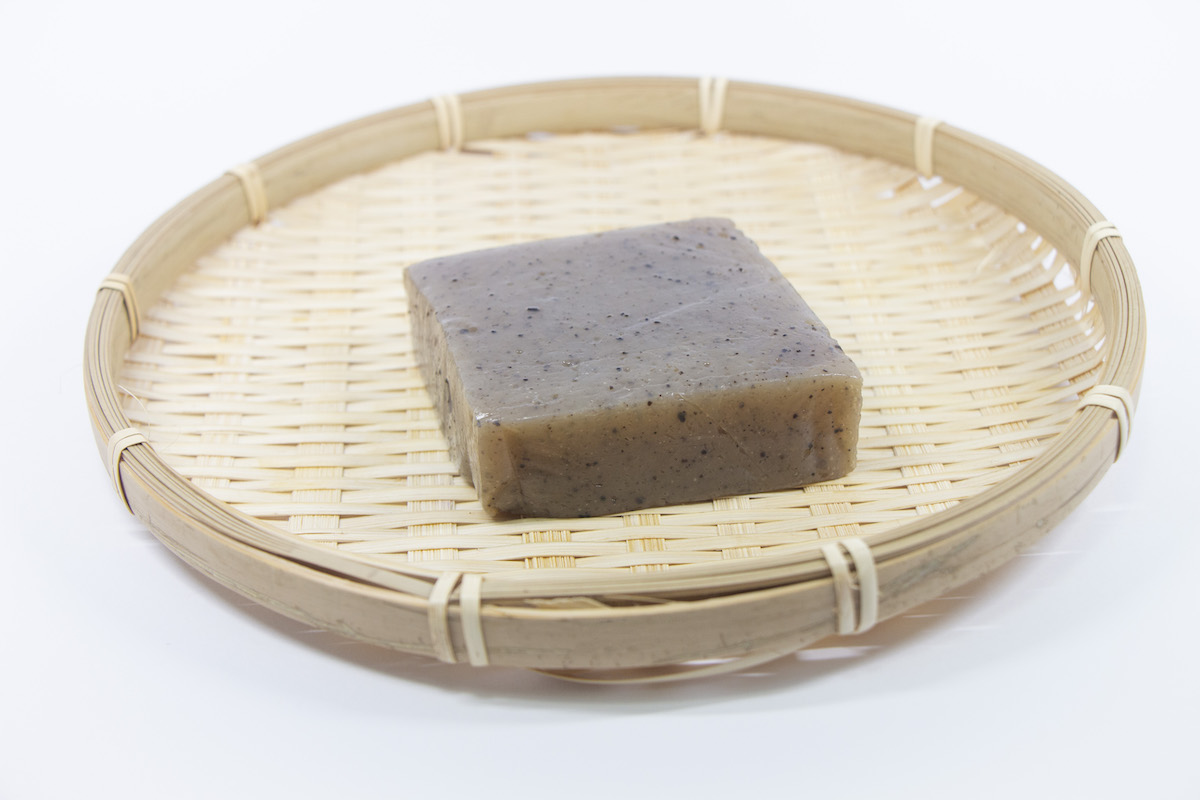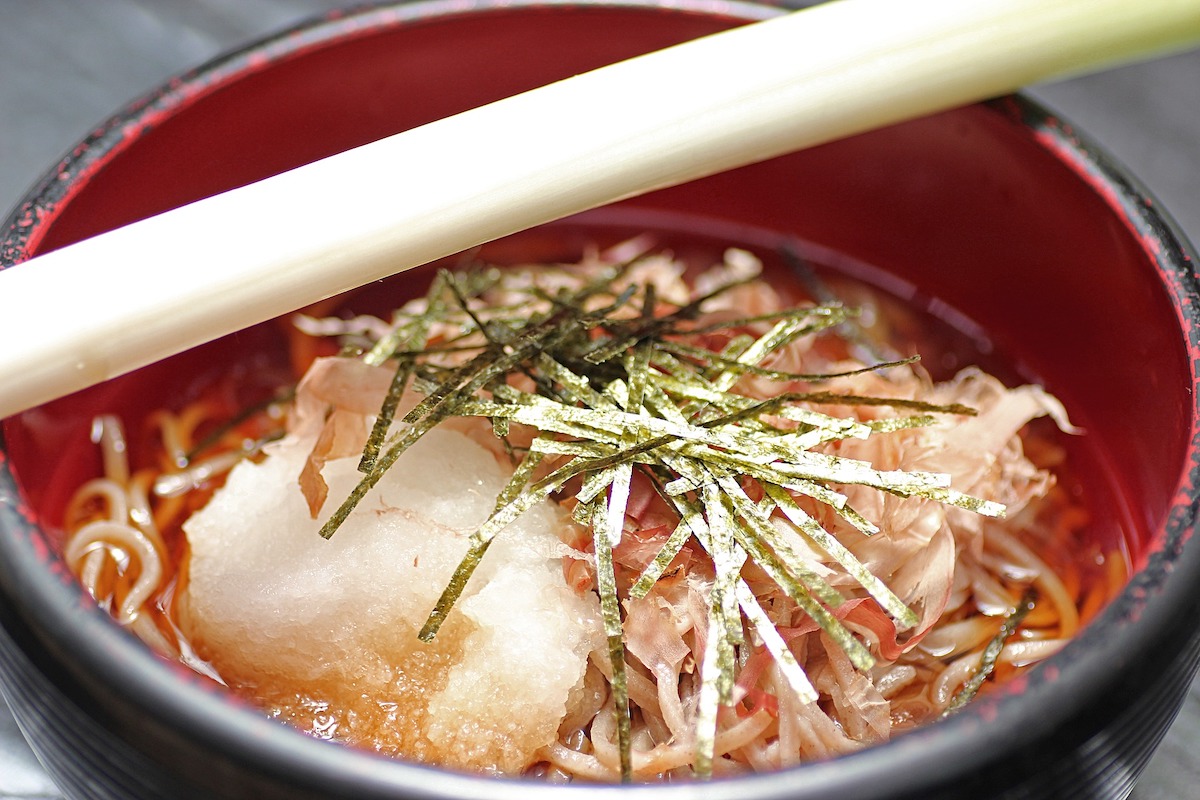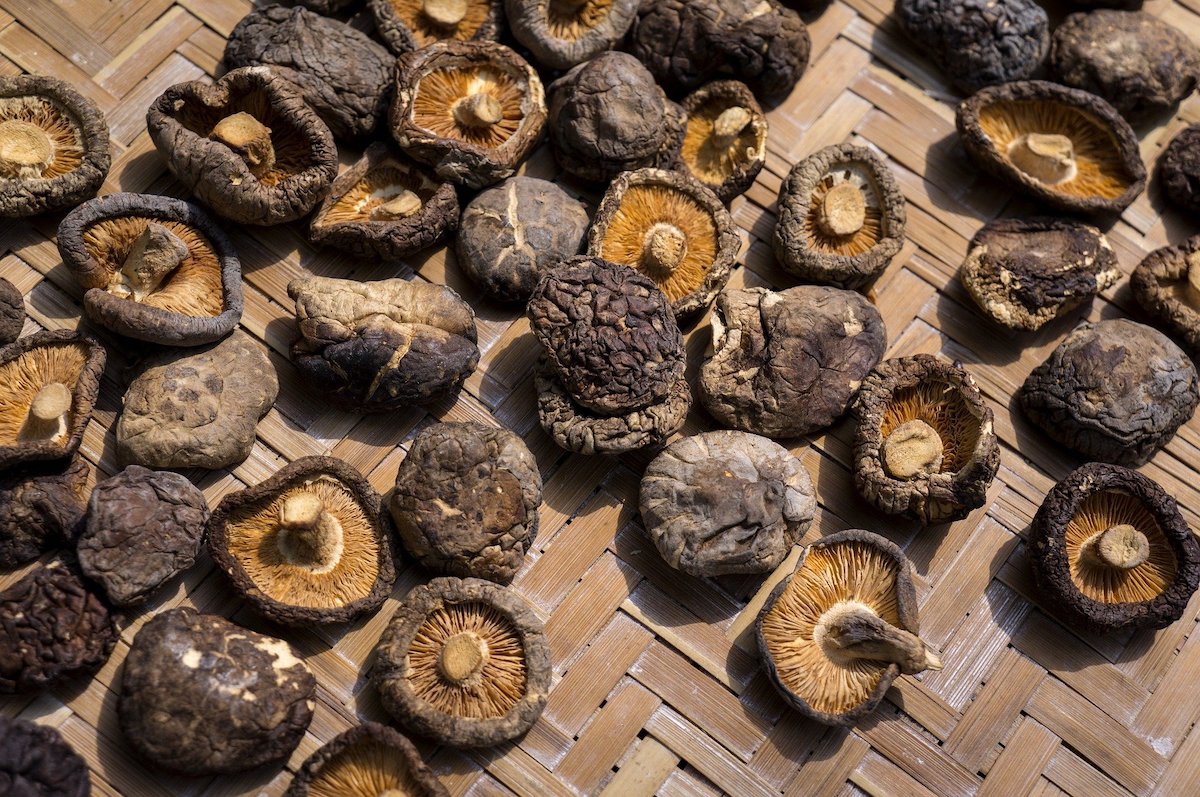Devil’s tongue, daikon, and shiitake: what are they, and what are they good for? Read on to learn about three Japanese superfoods you should try this autumn!

Sweaters and fuzzy tops are filling display windows, Starbucks is advertising its new seasonal 大学芋 “daigakuimo” (candied sweet potato) flavored frappuccino, and 紅葉 ”koyo” (vivid fall foliage) season has arrived! With the chilly weather comes flu season, so why not boost your immune system with healthy Japanese cuisine? In this article, we’ll introduce three Japanese superfoods: devil’s tongue, daikon, and shiitake!
Devil’s Tongue (konnyaku, konjac)
What Is Devil’s Tongue (こんにゃく)?

Although it has a rather frightening name and an unappetizing appearance, devil’s tongue, or konnyaku (also konjac, not to be confused with the alcoholic beverage, cognac!), is a well-loved ingredient in many traditional Japanese dishes. Sometimes called yam cake, konnyaku is a jelly-like food made from the corm, or the underground stem, of the konnyaku plant. You can find konnyaku in the form of noodles (しらたき), balls (玉こんにゃく) or in slab form (板こんにゃ).
What Does Konnyaku Taste Like?
Konnyaku has a neutral flavor, but it’s the texture that makes it stand out in any dish. Boiled, it has a chewy, elastic–shall I say bouncy–texture. They say the more you chew, the more delicious it becomes!
What Is Konnyaku Good For?
Konnyaku is known as a diet food because it is low in calories and is made up of about 98% water. In addition, it contains a healthy dose of dietary fiber, easily absorbable calcium, dextrose, iron, phosphorus, selenium, and potassium.
This means that konnyaku is a natural antidote for constipation. A recent Japanese survey showed that the number of people in Japan suffering from constipation has increased since the coronavirus pandemic hit, due to increased levels of stress and a more sedentary lifestyle. Konnyaku is also great for overall digestive health, builds strong bones, helps balance blood sugar levels, and works to combat metabolic syndrome (a combination of high blood pressure, diabetes, hyperlipidemia, and obesity).
How To Eat Konnyaku
Konnyaku must be boiled before eating. It can be served on a stick and topped with savory sauce (dengaku), sliced and twisted into a pretzel-like shape (in the New Year’s dish called chikuzenni), or sliced into thick triangles the hot pot dish called oden.
You can find hot, ready-to-eat oden at any convenient store during the chillier months in Japan, or if you want to try cooking it at home, try this recipe by Just One Cookbook. If you aren’t into oden, you can try making takikomi gohan in your rice cooker or instant pot. Or, for a super simple foray into the world of konnyaku, try making miso dengaku.
Caution: Don’t eat more than 1 kilo of konnyaku a day, or you’ll have some serious intestinal trouble!
Japanese Daikon Radish

What Is Daikon (大根)?
Related to broccoli, kale, and cabbage, daikon is a long, white cruciferous vegetable with bushy green leaves commonly eaten in Asia (but in North America primarily used as animal fodder!).
What Does Daikon Taste Like?
Japanese daikon tastes peppery and has a pleasantly crispy taste when eaten raw. When simmered, it has a mellow sweetness and a melt-in-your mouth texture.
What Is Daikon Good For?
The leaves, root, and seeds of daikon are all edible, with the leaf portion containing a ton of vitamin C. Overall, daikon is rich in enzymes, potassium, phosphorus, copper, iron, and phytonutrients.
All these make daikon great for kidney, liver, and digestive health (breaking down fats and proteins), helps lower cholesterol levels and blood pressure, has antibacterial, antiviral and anticancer effects, and is even said to help with respiratory decongestion.
How To Eat Daikon
You can enjoy daikon raw, whether sliced and added to a salad, pickled, or grated and mixed with soy sauce as a garnish for fish or meat dishes. Alternatively, daikon is delicious simmered, either on its own or as an ingredient in a heartwarming 鍋, or hot pot dish.
Here are two simple recipes for simmered daikon, one by The Spruce Eats and the other by Just One Cookbook.
Shiitake

What Is Shiitake?
Shiitake is a dark brown edible mushroom with a wide cap.
What Does Shiitake Taste Like?
Shiitake mushrooms have a rich, savory, flavor which Japanese call “umami.” Umami is becoming better known around the world as the “fifth taste” in addition to sweet, sour, salty, and bitter. As for texture, they are somewhat spongy.
What Is Shiitake Good For?
Shiitake mushrooms contain fiber, vitamins B and D, a variety of minerals including zinc, and some of the amino acids contained in meat, all of which make them outstanding for heart and immune health, with antibacterial, antifungal, and anticancer effects.
How To Eat Shiitake
These health boosters can be eaten cooked or rehydrated from dry, and a rich broth can be made by simmering them. This broth is usually mixed with broth from other vegetables or from fish for even better flavor!
Cookpad, a popular online collection of easy recipes, has a super easy simmered shiitake recipe you can follow to make a healthy side dish. If you are going for a whole meal, try the takikomi gohan from earlier.
Over To You: Let’s Have Nabepa!
As you can see, konnyaku, daikon, and shiitake are all powerful, immune-boosting Japanese superfoods, and well-suited to the cooler weather. This autumn, why not invite your friends and have a (socially distant) 鍋パ, or nabe party?



